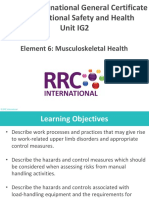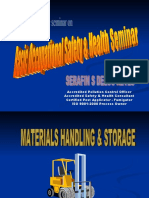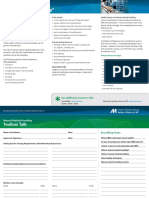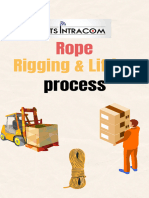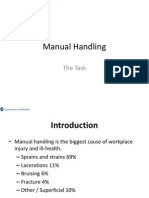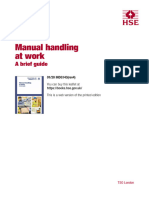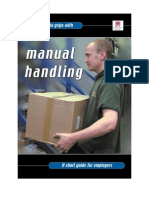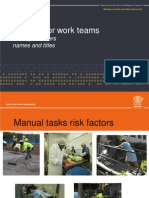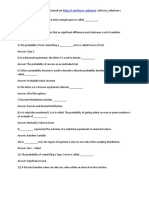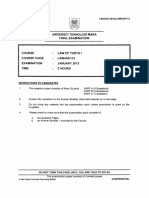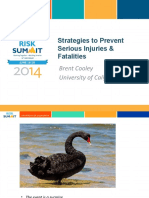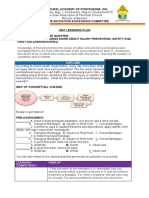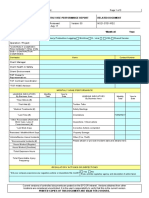0% found this document useful (0 votes)
153 views8 pagesClass Notes Element 6
The document discusses musculoskeletal health and manual handling in the workplace. It describes potential work-related injuries like upper limb disorders and back injuries that can result from repetitive tasks, poor ergonomics, or manual handling activities. It also outlines hazards associated with load handling equipment and discusses controlling risks through equipment selection, training, inspection, and following manufacturer guidelines. Potential accidents are described for equipment like forklifts, lifts, conveyors, and cranes.
Uploaded by
danish asrarCopyright
© © All Rights Reserved
We take content rights seriously. If you suspect this is your content, claim it here.
Available Formats
Download as PDF, TXT or read online on Scribd
0% found this document useful (0 votes)
153 views8 pagesClass Notes Element 6
The document discusses musculoskeletal health and manual handling in the workplace. It describes potential work-related injuries like upper limb disorders and back injuries that can result from repetitive tasks, poor ergonomics, or manual handling activities. It also outlines hazards associated with load handling equipment and discusses controlling risks through equipment selection, training, inspection, and following manufacturer guidelines. Potential accidents are described for equipment like forklifts, lifts, conveyors, and cranes.
Uploaded by
danish asrarCopyright
© © All Rights Reserved
We take content rights seriously. If you suspect this is your content, claim it here.
Available Formats
Download as PDF, TXT or read online on Scribd
/ 8


